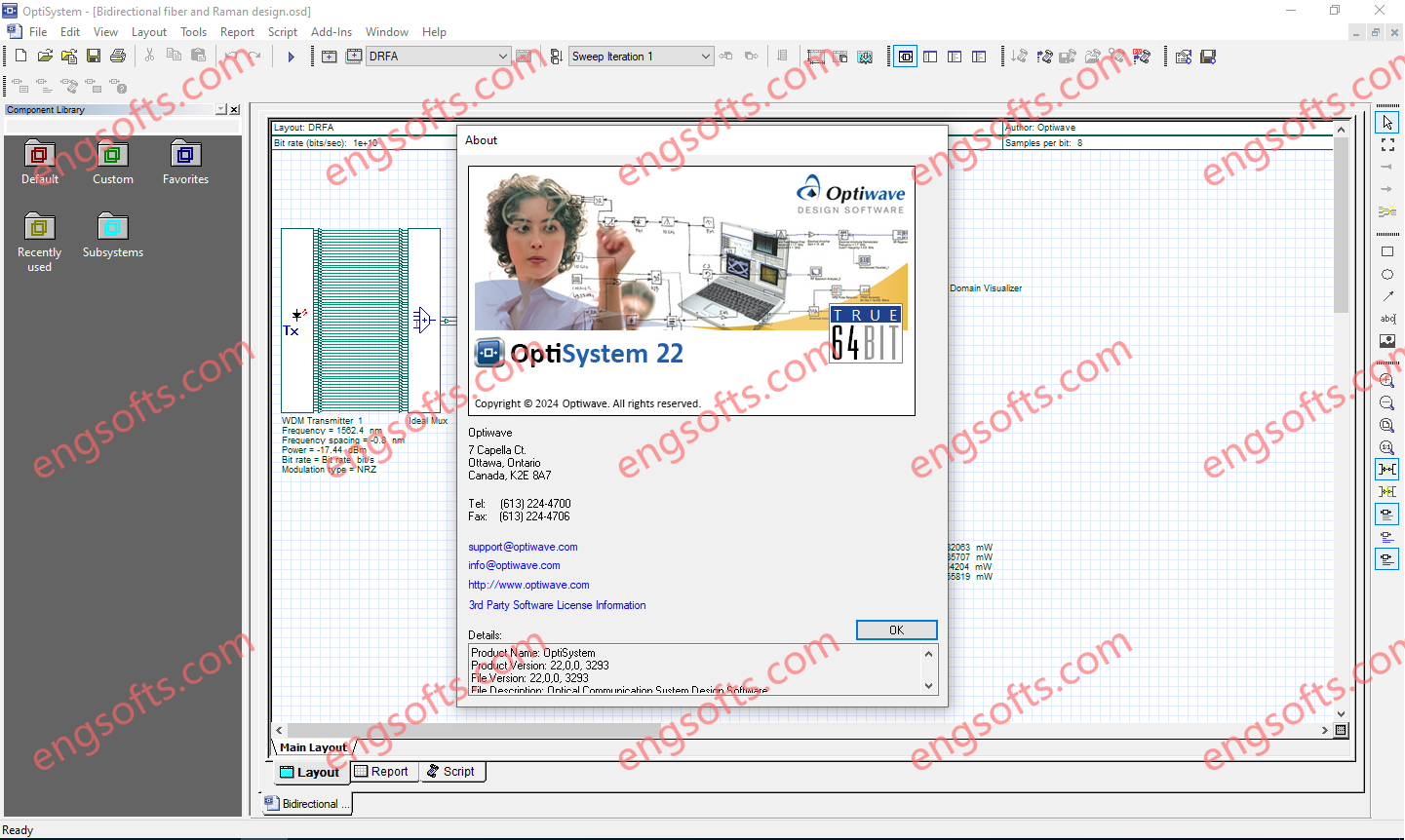
Optiwave announces OptiSystem 22.1, a major update to its optical system simulation platform, featuring advanced photonic integrated circuit (PIC) design/system characterization tools, machine learning capabilities, and workflow improvements. Available versions: 22.x , 21.x , 20.x , … Optiwave OptiSystem 22.0 Tested Picture Key Highlights Optical S-Parameters: Import S-parameter files (including Touchstone) from OptiBPM, OptiFDTD, or third-party tools to model PICs in system-level simulations. Dynamically generates ports for seamless integration. PIC Waveguide (W.G): Model passive or electrically controlled optical waveguides with customizable refractive indices. Machine Learning Tool: Train systems using eye diagrams (internal or external) to predict performance and optimize parameters for optical networks. Workflow Enhancements Visualizers’ Quick View in project browser: Toggle between single-iteration or bundled data displays. VCSEL Laser...
Optiwave OptiMode 5.0—a sophisticated CAD platform designed for optimal waveguide structures. OptiMode empowers engineers and researchers with precise modal analysis, offering insights into mode characteristics, profiles, and effective indices. Key Features of OptiMode: Modal Analysis Mastery: OptiMode serves as a pivotal component for precise modal analysis, allowing users to identify supported modes and determine critical characteristics such as mode profiles and effective indices. Versatile Applications: OptiMode supports a wide range of applications, including single mode (SMF) and multimode (MMF) fibers, planar waveguide design, and complex profiles like Multicore fibers (MCF) and hollow core fibers (HCF). Seamless Integration: Available as a stand-alone application and integrated into Optiwave’s propagation tools, OptiFDTD and OptiBPM, OptiMode enhances design workflows through modal injection in source...
OptiInstrument, developed by Optiwave in collaboration with EXFO, addresses the need to automate instruments for researchers, scientists, photonic engineers, professors, and students. OptiInstrument provides a simple, efficient, and user-friendly way to manage multiple applications. KEY FEATURES User-friendly GUI that operates from a single window Remote operation and control of instruments Execute one or a sequence of SCPI commands Import sequences and script files Reorder commands, add loops and pause from a preconfigured list Generate Python script from a sequence of commands Edit and run Python code using the built-in editor Show graph or table view of data signals Save results of executed SCPI commands in a CSV or JSON file Run preformatted scripts to automate optical measurements using EXFO equipment NEW...


 ID:softmed
ID:softmed ID:956575828
ID:956575828